Solarpunk is a speculative genre and artistic movement that focuses on renewable energy, integration with nature, and working towards a sustainable future. The “solar” part of the term refers to renewable and sustainable energy and the “punk” in the term refers to the genre’s anti-authoritarian and anti-capitalist ideals.
A large part of the sub genre is the reducing personal ownership. Currently, we all have what we need when we need it. There are multiple cars for each household contributing to pollution. Consumerism has caused society to have an abundance of “junk” that we can purchase whenever we want. A large part of Solarpunk aims to have a solid community that are willing to share things in hopes of reducing waste. This can be seen in the art with this aesthetic. There is always a great sense of community and closeness.
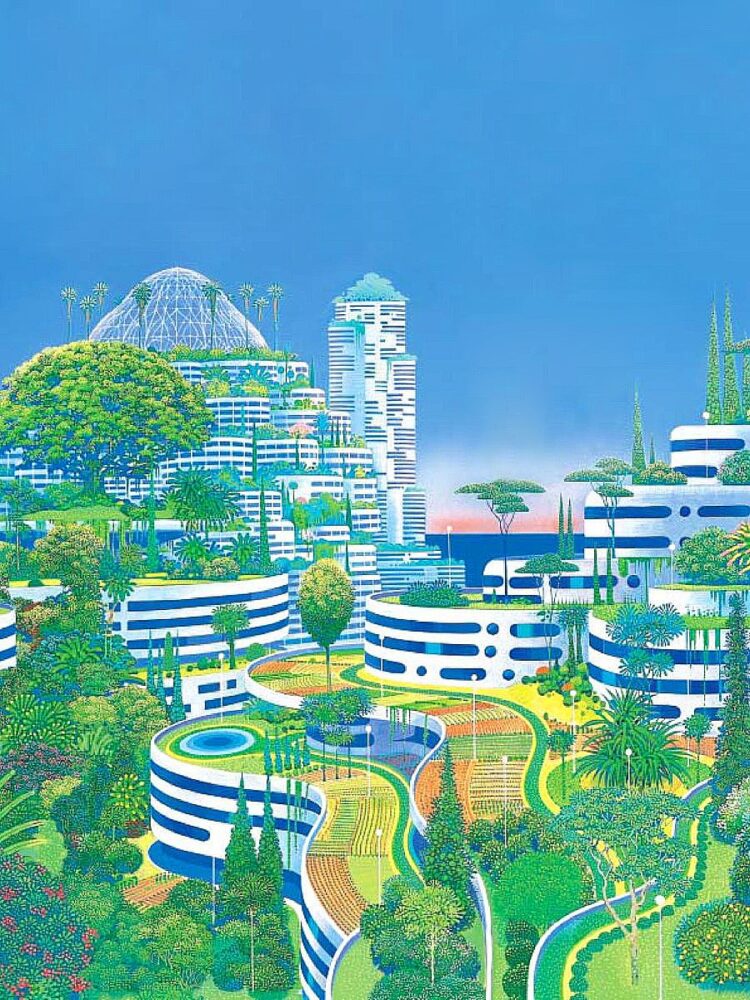
Into the Depth of the Sacred Forest – Hiroo Isono
The term Solarpunk was first conceived in a blog post in 2008 titled, “From Steampunk to Solarpunk”. The post referenced cargo ships using new sails as a means of power. This influenced the author whose username is “john-robert”, to conceptualize the Solarpunk genre. Following its conception, many other artists and literary publicists contributed to the genre, such as Matt Staggs, Olivia Louise, and Adam Flynn. Their work was a large part of the development of “The Solarpunk Manifesto”, which is a guide for all think Solarpunk.
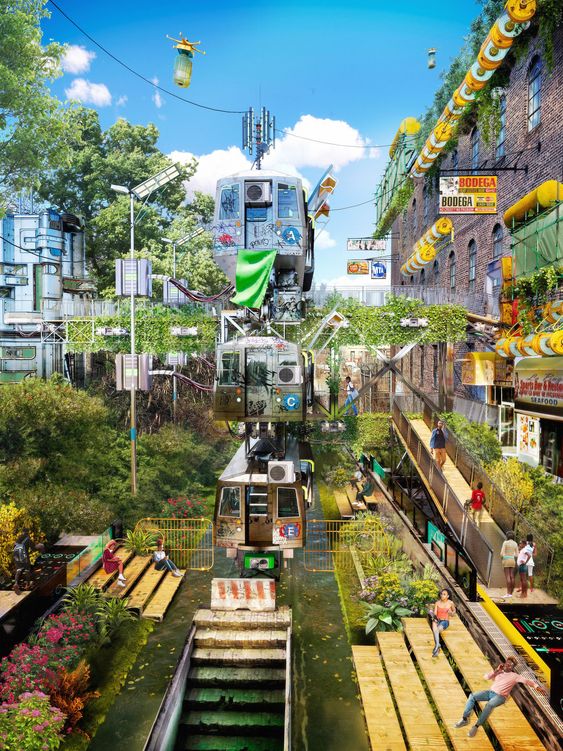
A digital collage – Olalekan Jeyifous
Solarpunk futurism differs from other futurism sub-genres such as cyberpunk and steampunk by avoiding pessimism and instead focusing on do it yourself themes and social inclusivity. The general Solarpunk aesthetic was influenced by the prevalence of dystopian media in the 2010s. Solarpunk was an alternative to what we usually saw in the media. Some literature in this genre include Solarpunk: Ecological and Fantastic Stories in a Sustainable World (2012), by Elisa Cogbill-Seiders, A Psalm for the Wild-Built (2021), and A Prayer for the Crown-Shy (2022), by Becky Chambers.
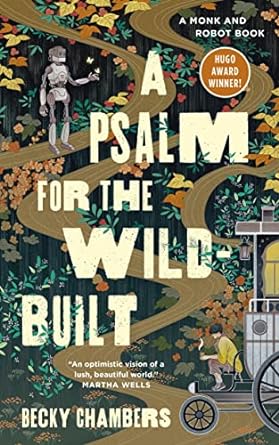
Cover art – Feifei Ruan; Cover design – Christine Foltzer
A big theme in Solarpunk is the integration of nature with architecture. Art depicting Solarpunk is community based with vegetation and architecture working together to provide and sustain society. The art has a lot of green color, but also has advanced technology. The technology is usually self made by the characters and is mainly there to make things easier.
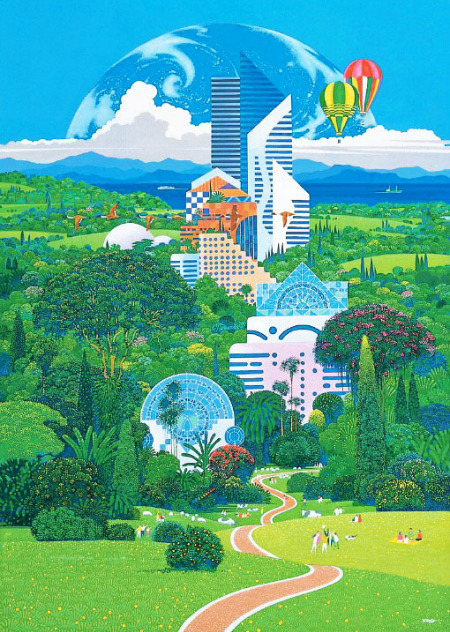
Into the Depth of the Sacred Forest – Hiroo Isono
A great architectural example of the Solarpunk aesthetic is Italy’s Bosco Verticale or “Vertical Forest”. Bosco Verticale is a residential complex that features two residential buildings designed by Boeri Studio. The complex is located in Milan, Italy and has the very distinctive feature of over two thousand species of trees distributed on the facades.
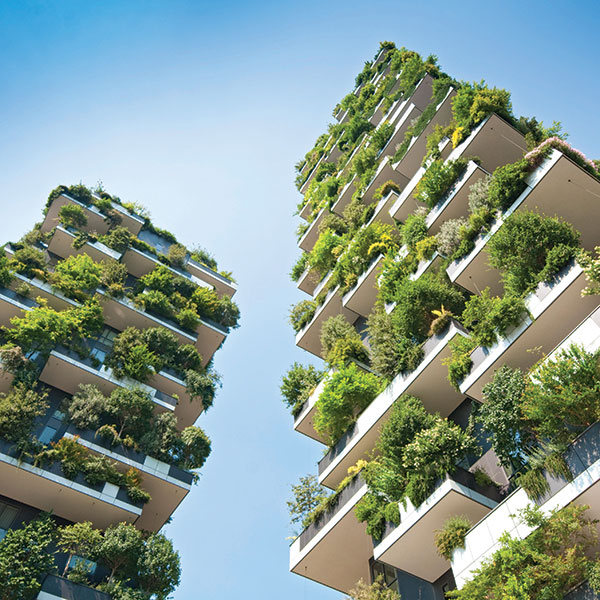
Bosco Verticale, Alamy Stock Photo – Riccardo Sala
Another influence Solarpunk has had has been in video games. Although there aren’t too many popular games out there that are based on Solarpunk, there has definitely been an increase. Overwatch has multiple maps where you can identify many Solarpunk influences. Two maps that have heavy Solarpunk influences are Oasis and Numbani. You can see futuristic designs and architecture as well as the incorporation of nature in the maps. These “Solarpunk” maps fit in with the storyline that the game follows which is set in a dystopian future where society is trying to rework itself and advance.
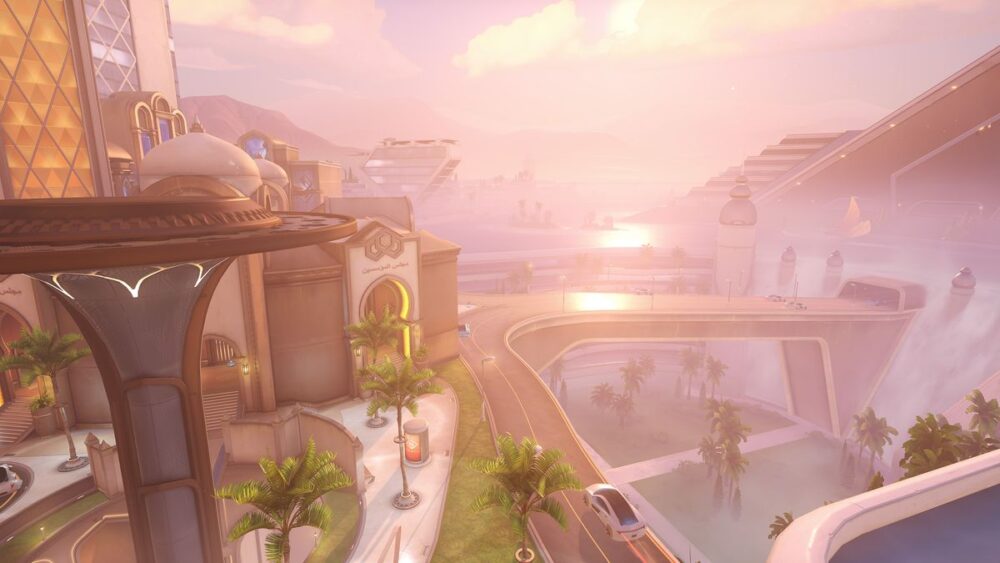
Oasis – Overwatch
Overall the Solarpunk aesthetic is relatively new. The positive futuristic ideals are a fresh view of what the future holds. Many of its counterparts like Cyberpunk focus on the demise of society. Solarpunk gives hope of a utopian future where society can coexist with both nature and technology. This aesthetic can be a light at the end of a dark tunnel and push us to work towards a better future.
Refrences
2.) Solarpunk Wiki
3.) “From Steampunk to Solarpunk”. Republic of the Bees. April 30, 2008.

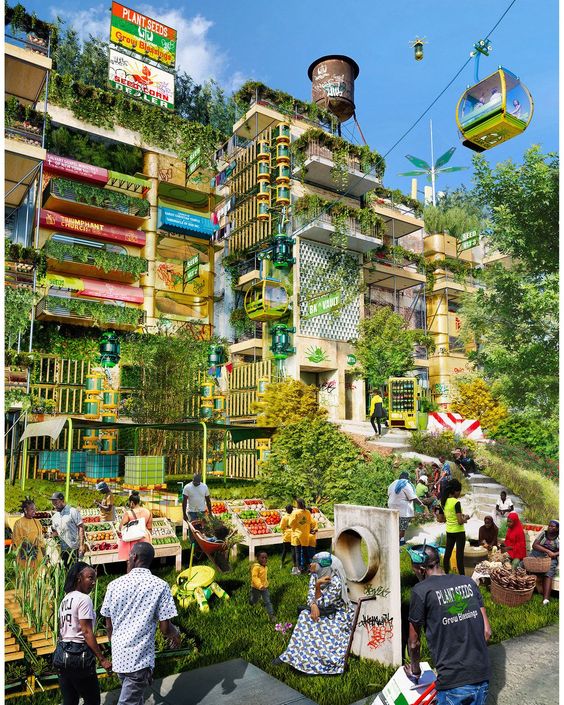
7 Comments. Leave new
Who is the artist for the top image “plant seeds”? I love the image and would like to give credit if shared in my classes (and maybe ask the artist if I could reprint in a book).
Alexis, Your exploration of Solarpunk in your blog post was enlightening!
The clear definition of the genre as a speculative movement focusing on renewable energy, nature integration, and sustainability set the stage well. The historical context, starting from the conception of the term in 2008 to the development of “The Solarpunk Manifesto,” provided a comprehensive understanding.
The distinction you made between Solarpunk and other futurism sub-genres like cyberpunk and steampunk, emphasizing optimism, do-it-yourself themes, and social inclusivity, was well-articulated. I appreciated the inclusion of literature examples, showcasing the depth and diversity within Solarpunk storytelling.
The integration of nature with architecture as a central theme in Solarpunk was highlighted effectively, especially with examples like Italy’s Bosco Verticale. The discussion on Solarpunk’s influence in video games, such as Overwatch, added a contemporary touch and demonstrated its impact across various mediums. I think it’s interesting to see a speculative concept that incorporates sustainability and environmentalism as a beautiful matter; that’s probably what spoke to me most about this Aesthetic.
Great job!
Thank you for the comments! I appreciate your interest in the aesthetic. I am excited to see what else may come from this sub genre aesthetic.
Because it’s more of a recently developed aesthetic, it’s nice to see something more unique and in line with our timeline. It’ll be interesting to see how this style develops and would love to see more of it in the future–either in media or in real life. I thought it was great to touch on all the media that reflect this art genre, including books, artwork, and architecture; although, it would be good to expand on the difference between capitalism and the existence of society itself, if possible. Where is the line drawn? Other than the coexistence between nature and civilization, how does this society function differently? Otherwise, I think this was a very informative and nicely presented post!
Thank you for your comments on the Solarpunk aesthetic. I tried to focus on the visuals of the aesthetic rather than the more political and social aspects, but you definitely have a good point. I added a small section that discusses some of the ideals that Solarpunk has. I think it gives some background on why the aesthetic is what it is.
Solarpunk is undoubtedly more appealing — both visually and as a future — compared to other popular genres like cyberpunk. Given that we’re on a planet with finite resources and a seemingly endless desire for materialistic gains, the emphasis on renewable and sustainable practices makes it all the more enticing (and hopefully achievable). The last image is a bit small to see the map’s details, so an enlarged version would certainly be welcomed for easier viewing.
Thank you for your input Vincent! Its visual and futuristic elements are what caught my eye with this aesthetic as well. I agree the renewable aspects are enticing and hopefully can inspire for a better future. I adjusted the image size as you mentioned. Thanks again for your comments!